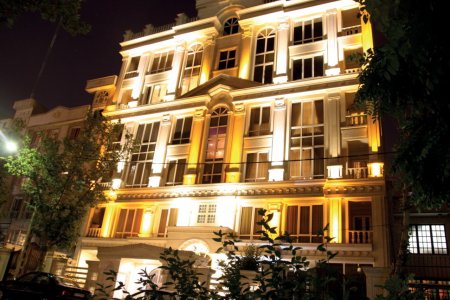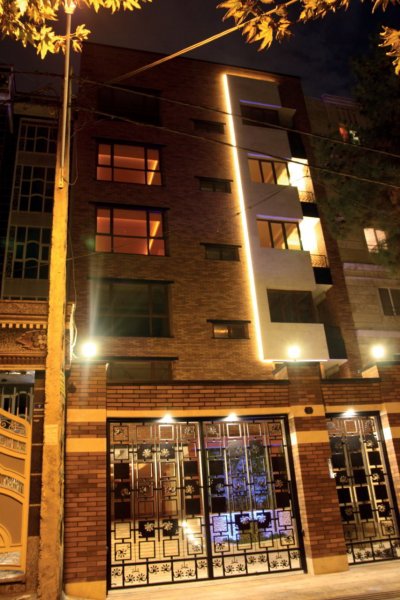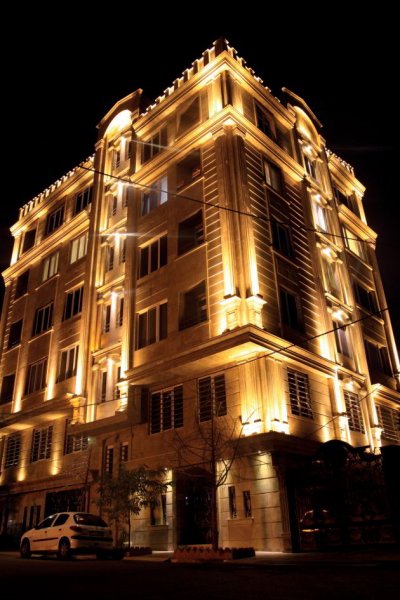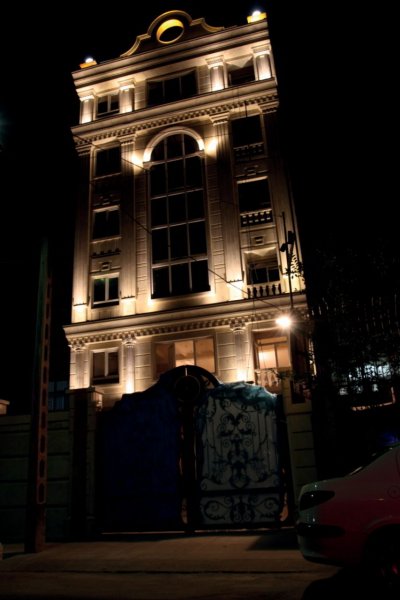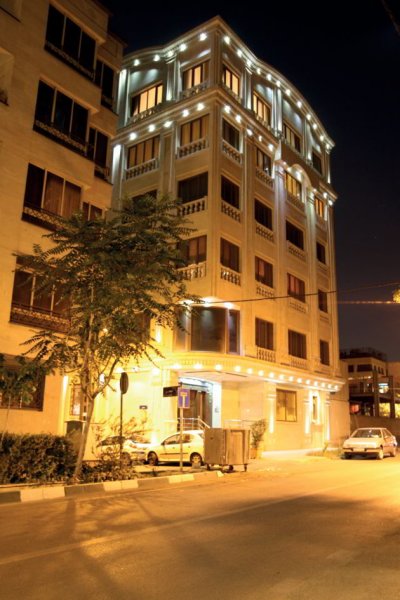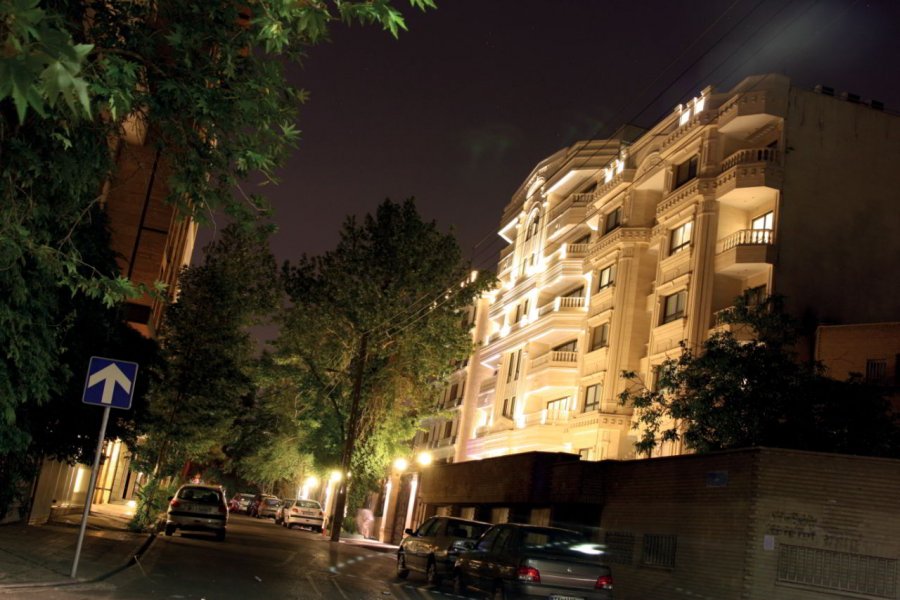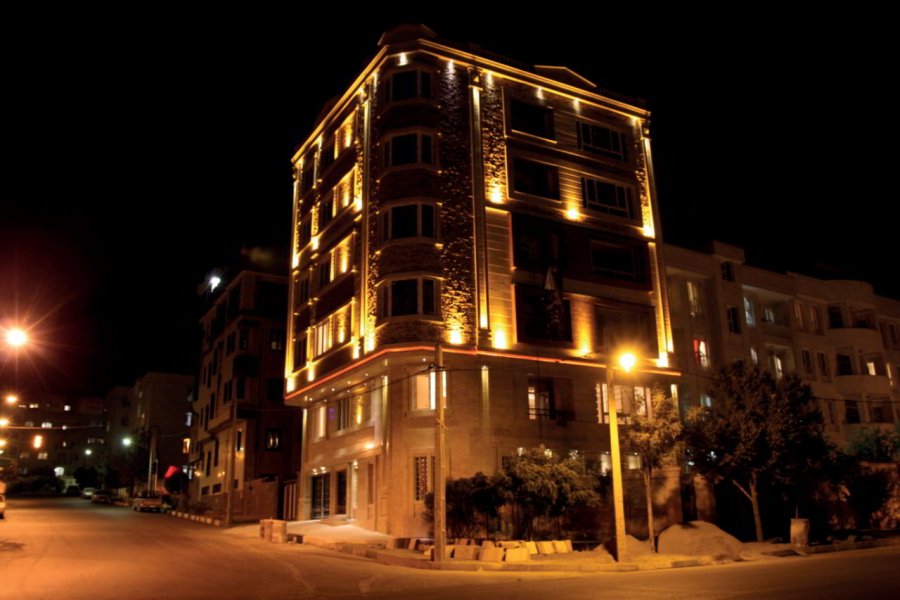The residential facade –
a part of the whole
As the exterior surface of a city, the cityscape interacts constantly with its inhabitants and visitors, and has a considerable impact on their awareness, emotions and environmental behaviour. In other words, the cityscape is a medium which can demonstrate and represent the non- physical aspects of a city, such as religion, history, culture and even economic and political characteristics. Considering the importance of the cityscape in the era of globalization we live in, cityscape management plays a key role.
Cities with good cityscapes tend to remain in people’s memories, the unique and specific image of the city enhancing both the tourists’ and the citizens’ aesthetic experience. In addition, a good cityscape can increase a city’s competitive advantages over other cities on a national and international level with inherent positive economic and social side effects.
The cityscape is obviously not restricted to daytime, but is also extended into nighttime, which leads to the concept of “nightscape”. Considering the pursuit of different leisure activities after work, a city’s nightscape can – and should – become a matter of debate. There is no doubt that in the absence of a comprehensive urban lighting plan, or a set of guidelines, a nightscape could easily turn into a chaotic cityscape, featuring a wide range of different lighting schemes based on owners’ or designers’ tastes. According to psychological principles, perceiving the cityscape can be defined as being based on the so-called Gestalt theory: a human being attempts to understand psychological and sociological phenomena by viewing them as organised and structured wholes rather than the sum of their constituent parts. It therefore makes sense that the study of urban city scape/nightscape should focus on the study of the overall impression, “the whole”. This ultimately means that urban policies need to become the prime tool for controlling, restricting and managing urban planning and lighting to achieve a harmonious result.
As one of the key components in the cityscape, buildings facades play a significant role in the urban landscape and image of the city. Today, urban nightlife has a recognised value. The creation of attractive, liveable urban spaces after dark has led to the emergence of a 24-hour city concept, which in turn contributes to revitalising and creating safer cities through a wide range of initiatives. However, in the practical sense promoting the concept of nighttime spaces was not as successful as was predicted. Contemporary city nightscapes sometimes look simply chaotic, and this chaotic backdrop brings nothing but disturbance for the residents. Despite the magnificent lighting design projects realised on individual buildings or structures, the picture as a whole does not represent harmonious interaction between elements in the urban nightscape.
In recent years, the trend in Tehran has been to illuminate the facades of residential buildings using LEDs. Studies claim that the main reasons for lighting residential buildings is to enhance the visual quality of a building or its architectural details, and to add economic value to buildings as well as enhancing urban safety and security. However, this is often undertaken regardless of the final outcome in the city nightscape.
Furthermore, lighting residential buildings is becoming increasingly attractive to home buyers, and as demand grows for lighting buildings in this sense, achieving a good city nightscape becomes even more impossible.
From another perspective, in the absence of a general lighting plan or specific codes for facade lighting, the Tehran municipality’s paying too much attention to lighting design is motivating the private sector to become interested in facade lighting design too, even for residential buildings.
Identifying the criteria for lighting residential buildings
Due to the lack of knowledge in terms of the criteria required for lighting residential buildings, the researchers adopted the Delphi technique as well as literature review to pursue their study. This method is widely used and accepted for gathering data from respondents within their domain of expertise. The technique is designed as a group communication process that aims to achieve a convergence of opinion on a specific real-world issue. The panelists engaged in the three Delphi rounds comprised three lighting design specialists and three urban design professionals. For each Delphi round, data was generated and analysed. Material was gathered in a response format and shared with all panel members for their use in responding to the next round.The outcomes demonstrated that there are several factors which play a significant role in the acceptance of facade lighting on a residential building. These include:
1. Contextualism
This addresses how the illumination of one building aligns with that of surrounding buildings and urban space. To be precise, viewing time can affect the lighting design: if a building is located in a position where it is visible for a longer period than other buildings, the lighting could be designed to highlight more details. Otherwise, the lighting should be restricted or reduced.
In addition, the lighting concept is influenced by the quality of the space immediately surrounding the building. Residential buildings located in commercial streets are allowed more freedom when lighting their facades, while residential buildings in quiet, residential streets should apply calm, more intimate lighting. Last but not least, background brightness in the environment where the building is located must be taken into consideration. In dark environments, lower illuminance levels are required. A freestanding building with a dark sky as a backdrop requires far less light than a facade in a brightly lit street.
2. Harmony with the architectural form and style
The form and architectural design of a building, including facade dimensions, materials and age, impact the lighting design in several ways. For reasons of energy saving and to combat light pollution, the lighting design should align with the size of facade. That said, large-scale facades must be lit with care and focusing on key elements. Moreover, regardless of whether the building is historical or modern, the style and material used for a building facade are other crucial design elements which need to be addressed when designing the lighting. The lighting design of modern structures is often expected to be flexible and creative, whereas classical style buildings tend to be illuminated is a subtle and frequently symmetrical fashion. When it comes to specifying light sources and lighting techniques, the architectural form and style of the building are the decisive criteria. Colour temperature, colour rendering, luminous intensity distribution, size of light source/ luminaire as well as the positioning of the lighting equipment all contribute to underscoring the formal identity and character of the building.
3. Harmony with the character of the residential building
A lighting design can express or reflect the activity that goes on within a building. For instance, public preferences and expectations of the lighting for a shopping mall vary considerably from that for a religious building. Accordingly, through a lighting design a residential building seeks to reflect a sense of calm, safety, dignity, intimacy and cosiness.
4. Light pollution and glare
Light pollution is a term that describes wasted light or spill light, which is disturbing for users of public spaces and for residents in the immediate surroundings, as well as for flora and fauna. There are many ways in which facade lighting can give rise to glare and light pollution. Improper installation angles or the inappropriate position of light sources, over-illuminated facades, and reflected light from the facade are just some examples.
5. Maintenance and repair
While all light sources and fixtures should be resistant to changing climatic conditions, they should be accessible for maintenance and repair. Luminaires need to be cleaned and lamps replaced according to a strict schedule in order to maintain the promised efficiency ratings.
A closer study of the lighting on residential buildings in Tehran Given that the demand for facade lighting on residential buildings is on the rise, the number of illuminated residential buildings has grown in recent years. The final part of the research was dedicated to acquiring a deeper understanding of the status of the lighting on residential buildings in Tehran. A random sample of 38 cases were studied and analysed.
The first step comprised taking photographs of the selected buildings by night using a camera equipped with a luminance measuring photometer (LMK). Not only the luminance of the residential buildings was analysed. Other aspects of the lighting design were also evaluated in accordance with the criteria listed above.
The research findings showed both the benefits and drawbacks of lighting design on residential property. Despite all the advantages related to the lighting design of residential buildings, such as increasing the sense of safety and belonging, there are some inevitable disadvantages which need to be addressed.
The results demonstrated that the prime issue concerning facade lighting on residential buildings is light pollution and glare. Although international codes quote a recommended luminance for facade lighting as being 10-15 candela, the data analysis showed that the average luminance of the case studies analysed was around 50 candela. In addition, in some cases over-illumination and improper installation angles caused light spill into closed buildings, which is highly disturbing to the inhabitants.
Faulty luminaires were discovered on many facades, the inaccessibility of certain light sources and fixtures being the reason for why this was so common.
A combination of various factors, including the use of diverse and coloured light and the complete lack of coherence between the lighting scheme and the form or style of the facades, account for why there is little harmony between the existing facade lighting and the architectural design of the facade.
Furthermore, the close study revealed that very few buildings (seven of 38) were in harmony with surrounding urban fabric. The remaining 31 were barely in balance with their immediate surroundings. In conclusion, although lighting residential facades can have some benefits, such as enhancing the inhabitants’ sense of belonging and safety, in the absence of clearly defined lighting codes the current trend is worrying and a serious threat to the cityscape as well as to the natural environment. Other countries around the world have come up with alternative solutions to subtly draw attention to residential buildings. This sometimes means using interior lighting to define a facade, or applying luminaires carefully and in moderation. In many cases, professionally designed public lighting could be sufficient, and additional facade lighting then becomes unnecessary.
